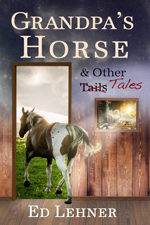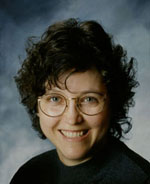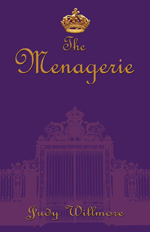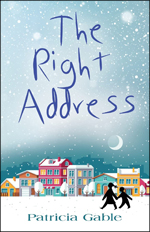Author Ed Lehner is a poet, novelist, and short story writer. His newest release is Grandpa’s Horse and Other Tales (AIA Publishing, March 2022), a collection of twelve short works. You’ll find Ed on Facebook and Twitter, and on his website ELehner.com. Read more about Ed and his writing in his SWW 2020 interview.
 What do you want readers to know about Grandpa’s Horse and Other Tales?
What do you want readers to know about Grandpa’s Horse and Other Tales?
While some short story collections have a central theme, this anthology is a mix of diverse topics including enhanced memoirs, mystery, and romance along with fanciful flights concerning Covid-19 and climate change.
How did the book come together?
I had all the stories written, and doing a collection had been in the back of my mind for a while. Once I made the decision and the commitment to do it, the book came together fairly quickly. However, I then went back editing and rewriting which took me several months. My publisher then agreed to review it and was eager to work with it. It then went to the editor who had the editing finished very quickly. Of course there was cover design and formatting. I would have to say the whole process took about a year overall.
I discovered AIA Publishing, a small operation headed by Tahlia Newland, when I was looking for an editor/publisher for The Awakening of Russell Henderson. I came across Tahlia’s name on the Alliance for Independent Author’s list of recommended services. She had good reviews as an editor and her costs were very reasonable. After having a great experience working with her on The Awakening, it was a no-brainer to send her Grandpa’s Horse and Other Tales. She sent the manuscript to Barbara Scott-Emmett, who lives in London, for appraisal. Barbara gave it her blessing. From there it went on to Katherine Kirk who lives in Ecuador for line editing. Tahlia’s daughter, Rose, designed the cover and did the formatting. I find it amazing that I had people from all over the world get this book into print (Tahlia lives in New South Wales, Australia.) The process was easy and seamless. Tahlia is amazing. She responds to my emails within twenty-four hours.
Tell us a little about each story in the collection.
“Grandpa’s Horse” ● A memoir piece that grew into an event I over-dramatized. I wrote this about the late John Stewart, his song “Mother Country,” and the crowd that watched a dying blind harness race driver do a last run around the track in his sulky, speaking to me of a time when people gathered for events whether contrived or spur of the moment.
“Library of the Occult” ● My first try at mystery. Once I got into it, it flowed easily to conclusion, totally fun to write. It was interesting to research London and try to emulate British dialogue. Watching a lot of stories on Brit Box helped. My editor was British and South African and found only one wording that wasn’t how an Englishman talks.
“A Man Called Thomas” ● Dystopian stories aren’t something I read, but with climate change in the forefront of our present time, I found this story easy to write. I see the population on this planet either unaware of or not wanting to make the minutest changes in their lifestyle to stem the heating of the planet. There are others who have no choice due to poverty or other circumstances. We seem to be unwilling and unable to solve a global problem that desperately needs fixing. This story is my personal rant.
“The Test” ● This short story came from an assignment in an online writing course…someone gets into a bad situation. What happens?
“The Anchor” ● Written for a contest in which we were given two images: canoes pulled up on a rocky shoreline and a lightning storm down a long, dark road bordered by tall hills. It was tough to get this one going, but in the end, surprisingly, it won second place.
“Katie” ● Part memoir of my childhood wanderings and a neighbor woman along with a fictional ending to the story.
“A Bottle of Dope and Shine” ● Another memoir piece, albeit, somewhat enhanced. I don’t know if the old boys playing cards were actually drinking moonshine. If they were, they didn’t offer me any. But the Coca-Cola part is honest truth.
“Starlight” ● I’ve always been fascinated by the deserts in the Four Corners (New Mexico) area. They have a magical mystique about them, so I wrote this about a damaged veteran suffering from PTSD and guilt who lives alone in the desert and is visited by a strange woman one night.
“Swinging on a Star” ● Written for a short story contest, and the Bing Crosby song jumped into my head. The setting is based on my in-laws’ beautiful home on their farm overlooking the Mississippi River in northeast Iowa.
“Becky and Richard” ● I was sitting on the patio at my favorite coffee shop a few years ago when two young adults sat down nearby. While I couldn’t hear their conversation, I could see them scoping out the tourists and knew they were doing some local criticism. The rest was from my imagination.
“The Ultimate Zoom” ● Having gotten on the Zoom train during Covid, I wondered what might happen if we could magically travel through time and space like on Star Wars or Star Trek…“Beam me up, Scotty.”
“Dana’s Story” ● This novelette came out of my second novel, The Awakening of Russell Henderson. I always felt that Russell’s wife, Dana, had a bigger story. So I gave her one. I thought it would be a short story, but she had a lot more to her tale, thus the novelette length.
Which story was the most challenging to write?
I would have to say that “Starlight” was my most challenging. It was one of the first stories I wrote and it was hard for me to keep it short and focused. Unlike a novel where there can be different situations and an ensemble of characters, I found it difficult to stay with only two and their immediate situation. Also, I found it difficult bringing it to an end without continuing it on into somewhere it didn’t need to go.
Who is your favorite character in the collection? Did any characters surprise you while you wrote their story?
Thomas from “A Man Called Thomas” would be my favorite character, I suppose because of his mysterious presence and his message. I was surprised at how feisty Emma, from “The Library of the Occult,” turned out to be.
Which story would you love to see play out in a movie?
It would be a toss-up between “A Man Called Thomas” and “Katie.” But I would have to go with “Katie” as it’s a story of coming of age, friendship, bigotry, and love.
What was your favorite part of putting this project together?
Strange as it might sound, going through these stories and doing the editing and rewriting was my favorite part. I liked revisiting what I had written with fresh eyes.
 What are you most happy with, and what do you struggle with most, in your writing?
What are you most happy with, and what do you struggle with most, in your writing?
I am most happy when I am involved in a project. I wrote The Awakening of Russell Henderson (a 90,000-word novel) in less than three months. I was fortunate the story seemed to write itself. What I struggle with is when I have a good story going and it suddenly stalls, like a novel I’m 40,000 words into now. I have several avenues towards the end that I have written and am not happy with any of them.
Do you prefer the creating, editing, or research aspect of writing?
Obviously, I like creating the story, the characters, the plot, etc. I also find the editing to be rewarding as it gives me time to review, rewrite and renew as needed. However, it can become a bit tedious after so many edits. That’s when it needs to go to a professional. Research, when needed, is essential. Even though a story is fiction, it’s important to have the essential facts straight such as defining a location, a road, a geographic area. Some things a writer shouldn’t try to make up.
What typically comes first for you: a character, a scene, a story idea?
Any of the above can spur me into a story. I listen to a lot of music, and just a word or a lyric can send me into a story idea. I like to people watch and make up their stories in my mind. I think I have quite a catalog of different characters residing in my head.
Looking back to the beginning of your writing/publishing career, what do you know now that you wish you’d known then?
I wish I’d had more guidance in publishing. I decided to self-publish for a number of reasons and I made some big mistakes (and costly ones) with publishing my first book. I wish I had done more research. After that debacle, I discovered the Alliance of Independent Writers which turned out to be a great resource.
Do you have writing rituals or something you absolutely need in order to write?
Being a completely undisciplined person, I have no rituals or set times to write. When I’m in the process of a story, it’s constantly on my mind. When I wake up during the night, I’m lulled back to sleep with thinking about where the story might lead, various dialogue, or situations. I don’t write it down, but I always remember it the next morning. Even during my morning meditation, ideas will come. I’ll sit down during the day and get everything down. Weird, but it’s what I do.
What writing projects are you working on now?
I have several short stories underway as well as the above-mentioned novel. I would like to put together another anthology when I have enough material.
Is there anything else you’d like readers to know?
Thanks to SouthWest Writers for their great support for all the writers in our area of the world.
 KL Wagoner (writing as Cate Macabe) is the author of This New Mountain: a memoir of AJ Jackson, private investigator, repossessor, and grandmother. Kathy posts to a speculative fiction blog at klwagoner.com and writes about memoir at ThisNewMountain.com.
KL Wagoner (writing as Cate Macabe) is the author of This New Mountain: a memoir of AJ Jackson, private investigator, repossessor, and grandmother. Kathy posts to a speculative fiction blog at klwagoner.com and writes about memoir at ThisNewMountain.com.
 What is at the heart of the story you tell in A Cowboy’s Destiny?
What is at the heart of the story you tell in A Cowboy’s Destiny? What advice did your publisher give you in preparation for the release of your debut novel?
What advice did your publisher give you in preparation for the release of your debut novel? KL Wagoner (writing as Cate Macabe) is the author of This New Mountain: a memoir of AJ Jackson, private investigator, repossessor, and grandmother. Kat has a speculative fiction blog at klwagoner.com and writes about memoir at ThisNewMountain.com.
KL Wagoner (writing as Cate Macabe) is the author of This New Mountain: a memoir of AJ Jackson, private investigator, repossessor, and grandmother. Kat has a speculative fiction blog at klwagoner.com and writes about memoir at ThisNewMountain.com.














